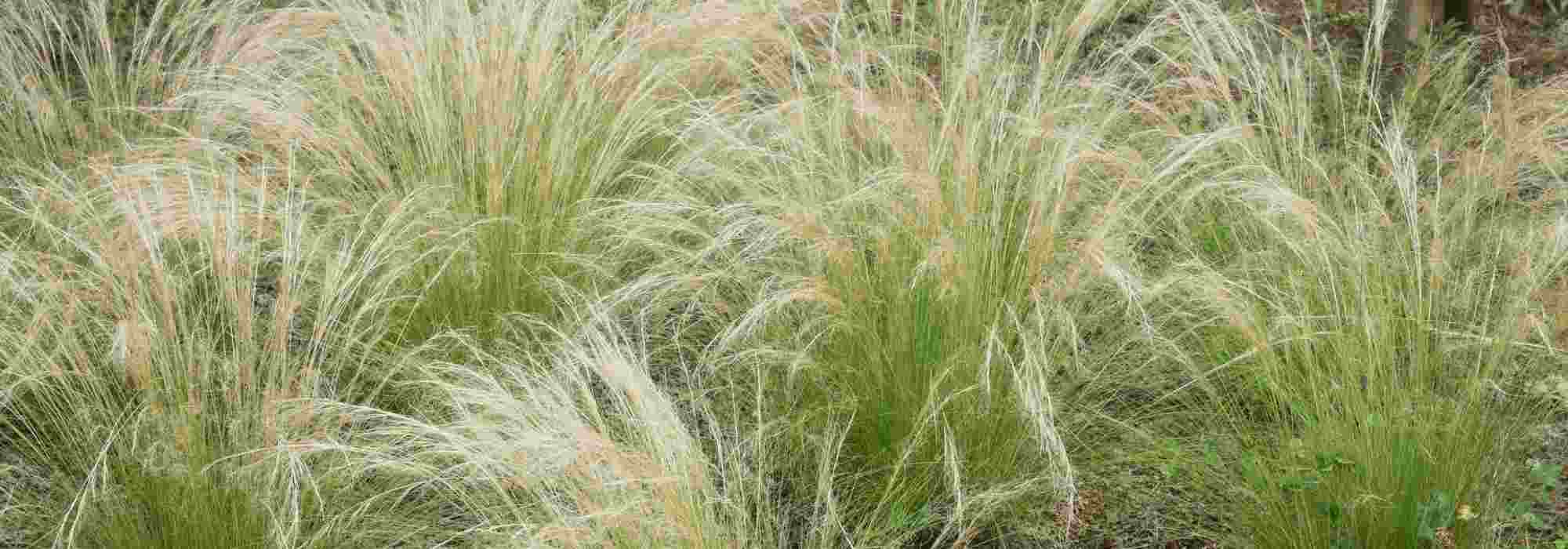
9 grasses for dry soil
Easy-to-grow varieties for poor soil
Contents
Often thought to need full sun, grasses with their airy foliage and delicate inflorescences grow in a wide range of conditions, even extreme ones, from damp soils to stony soils. While some cope equally well with cool or dry soils such as Carex or Calamagrostis, others will only perform and become fuller on dry soils, like popular Stipas and fescues.
True camel plants, these dry-soil grasses fear neither lack of water nor shallow, even rocky soils, and can thus colonise challenging areas of the garden.
Among grasses, many species are actually adapted to poor soils: deciduous or evergreen, in sunny or shaded positions, with upright habit or forming low tussocks, we offer here a brief selection that, far from exhaustive, brings together some of the most beautiful dry-soil grasses for your garden. There is bound to be one for yours!
Helictotrichon sempervirens or blue oat grass: highly ornamental
Among grasses with glaucous foliage that particularly appreciate dry soils, blue oat or Helictotrichon sempervirens is one of the most ornamental! As its species name indicates it is evergreen, and presents a dense clump of pointed, silvery-blue leaves. It forms a very graphic mini-dome that lends itself beautifully to rock gardens or more contemporary settings when planted en masse. In borders it becomes structural and superb accompanied by Iris and white to blue‑violet flowers. In midsummer, arched, straw‑coloured spikes emerge from the clump, rising above it and increasing its height (it goes from 40 cm to almost 1 m tall), adding to its charm. It is not at all bothered by frosts, surviving down to -20 °C!
The cultivar ‘Pendula’ is a little taller, about 80 cm, and has trailing leaves because they are much more supple.
Note : Leymus arenarius, also bluish and entirely suited to dry soils that we might have included in this selection, is not necessarily recommended because of its running rootstocks; it proves highly colonising… unless you wish to green a coastal bank.
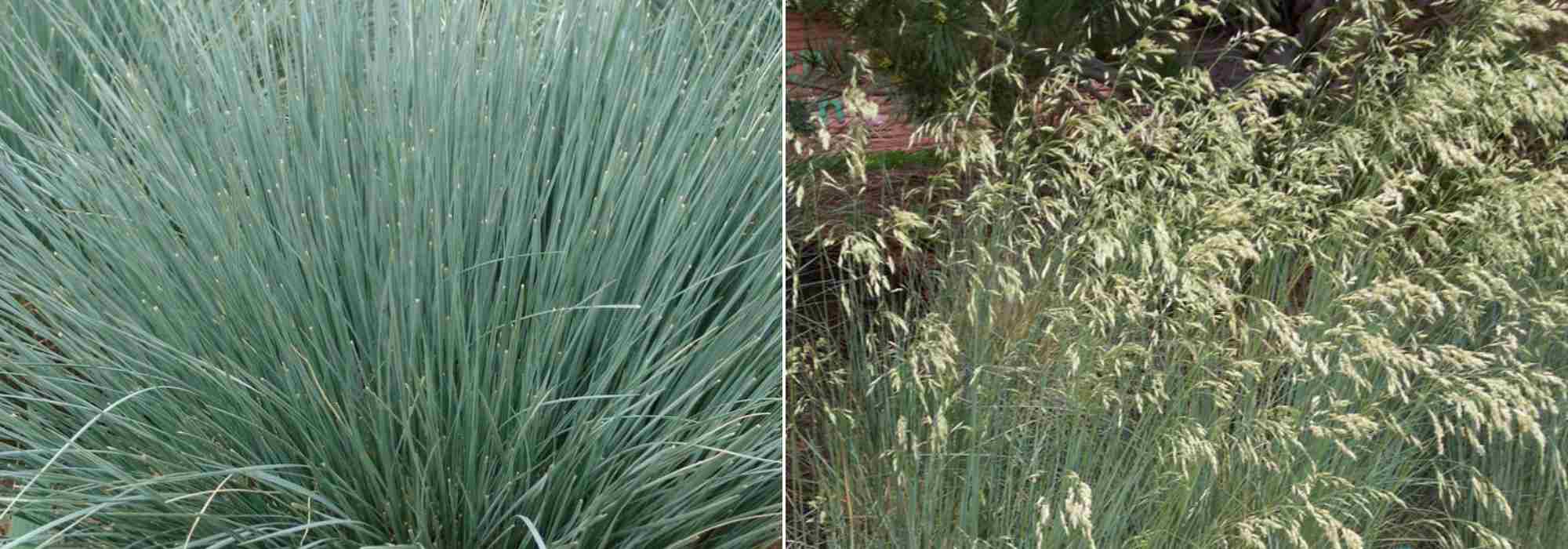
Helictotrichon, bluish foliage and summer inflorescences (Photo: A. Zharkikh)
Read also
Planting grassesStipa tenuifolia: an irresistible angel's hair
Alongside fescues, Stipas are grasses to plant in dry soil. These grasses are pure delights, certainly among the lightest and most supple. Extremely airy, their dishevelled tufts undulate at the slightest breath of wind and immediately catch the eye with light they reflect. Plant at edges, but also in combination with taller grasses, in rockeries or mixed borders…
Among Stipas, we recommend Stipa tenuifolia, about 50 cm tall, with a tuft of very fine green leaves, with blond spikes that invite stroking they are so silky. Its foliage takes on a beautiful glossy golden-brown tint in autumn, and it keeps good form over winter.
Stipa tenuissima ‘Angel Hair’, a related variety, is slightly taller (60 cm), very well suited to seaside locations where its long spikes remain decorative through winter. Both are extremely easy to maintain.
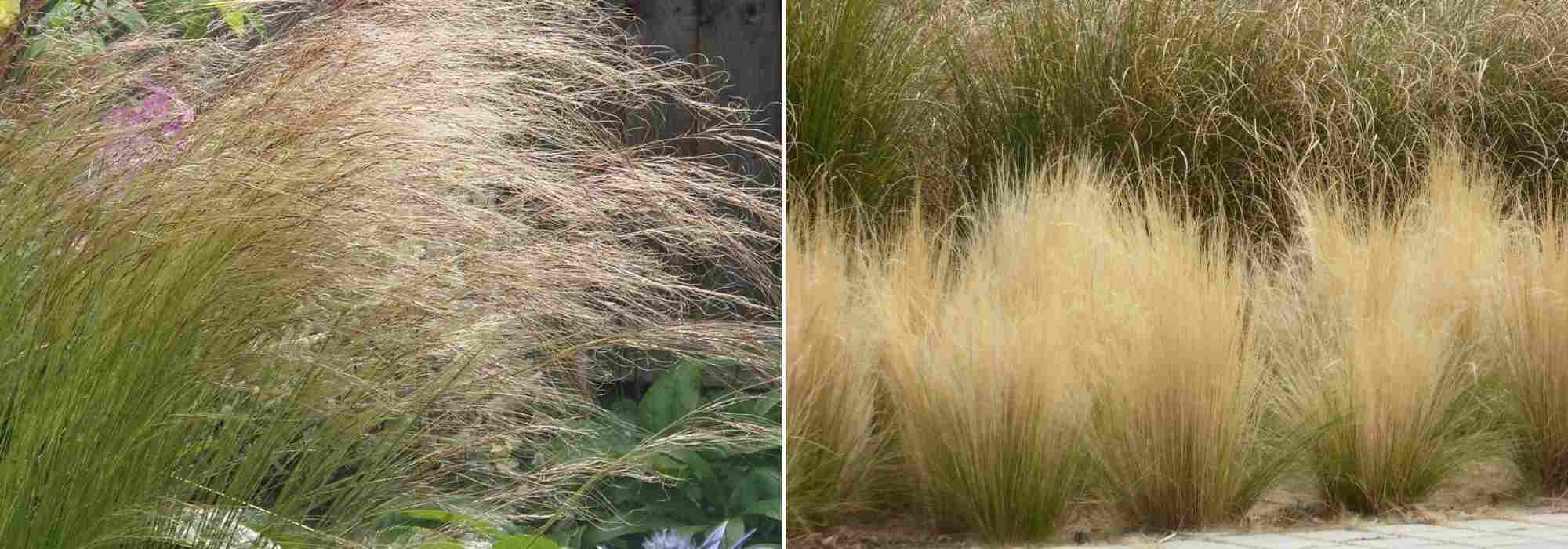
Stipa tenuifolia, irresistible angel hair
→ Learn more about Stipas in our full fact sheet and our ideas for pairings with Stipas
Discover other Ornamental grasses
View all →Available in 0 sizes
Available in 1 sizes
Available in 1 sizes
Available in 1 sizes
Available in 0 sizes
Available in 0 sizes
Available in 2 sizes
Available in 1 sizes
Available in 2 sizes
Available in 1 sizes
Festuca glauca: a must for dry soils
Among around 400 fescue species, all evergreen, blue fescue is a staple of dry soils. Its bluish foliage becomes even more pronounced in dry, poor soil! That says how well adapted it is to these harsh conditions. Dry soil also helps it live much longer.
It is ideal in very sunny positions but will also tolerate light shade. Its compact habit forms a dense small cushion about 40 cm high, with a modern appearance. This small size makes it suitable for rockeries or attractive containers. The persistence of its foliage is perfect for creating low borders, which set off lavender, cistus, iris and any plant preferring well-drained soil.
Blue fescue is superb; note that it grows fairly slowly and produces its light spikes in May. Many cross-breedings have produced numerous varieties that vary in blue tones — from greyer to more silvery — and in height from 15 to 40 cm.
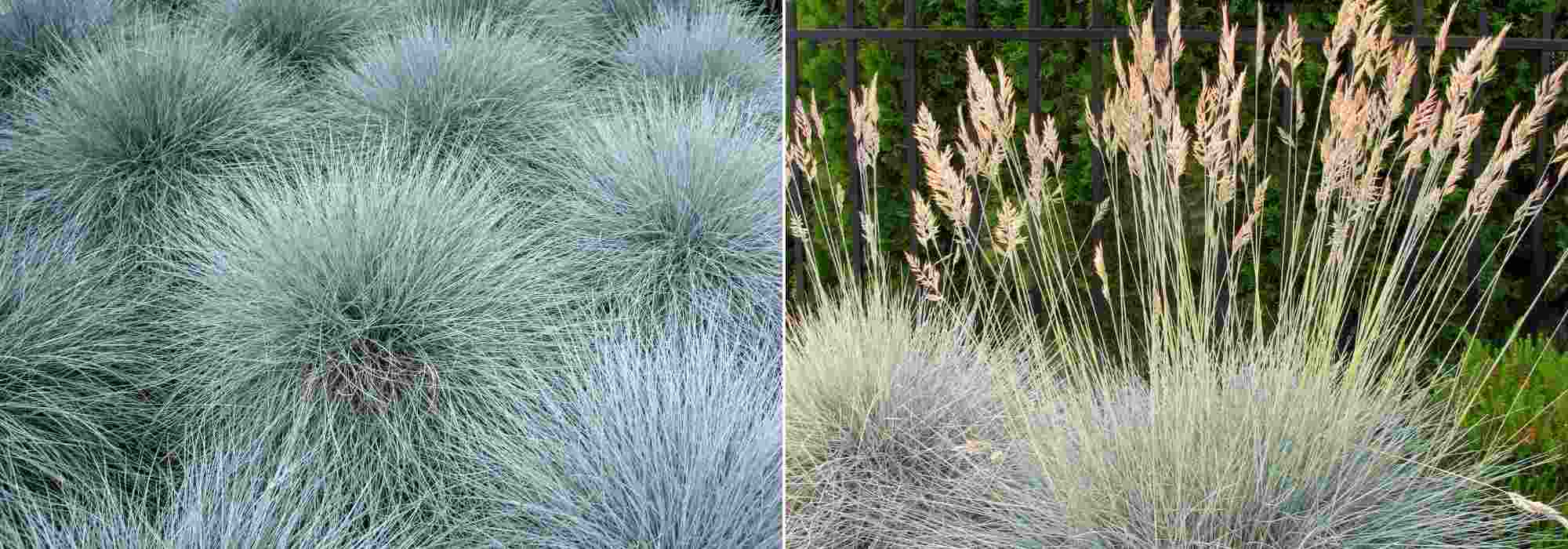
blue fescue, in small cushions and inflorescences
→ Find out more about fescues with our complete fact sheet and ideas for pairings with fescues; also discover 7 blue grasses
Read also
12 bushes for dry or free-draining soilPennisetum orientale 'Shogun': superb cascading flowering
Also called brush herbs because their inflorescences resemble small, very flexible cylindrical brushes, Pennisetums establish themselves very easily in dry soil. Generally medium in height, they are appreciated for their beautiful flowering in fluffy spikes. In this selection we recommend Pennisetum orientale ‘Shogun’, a cultivar slightly taller than the species, which will make a striking display along a path. Semi-evergreen, it stands out for its superb pink-toned flowering, arching above the foliage.
Because of its magnificent supple, arching habit in full flowering, this Pennisetum fits beautifully into romantic, naturalistic and contemporary gardens. Its handsome size (foliage to 90 cm high, and around 1.50 m in flower) predisposes it to occupy flower beds, mixed-borders, and large containers on a terrace.
→ Learn more about Pennisetums with our comprehensive fact sheet and discover our planting combinations
Panicum virgatum 'Heavy Metal': a striking upright habit
Although tolerant of cooler soils, Panicums, native to America, are grasses perfectly adapted to dry soils. They are also called upright panic or slender panic, to describe their erect habit, sometimes almost columnar. Composed of mainly tall varieties (between 80 cm and 2 m), they are therefore chosen to create effects of verticality, while benefiting from their rapid growth and natural appearance. In the United States, they are even used as windbreaks.
Among many varieties of interest, Panicum virgatum ‘Heavy Metal’ is a handsome cultivar with a straight, very upright habit, 1.20 m tall, with fine grey-green foliage that takes on reddish-brown hues in autumn. The feathery inflorescences are a lovely pink-white that creates a cloud of colour above the foliage. Plant it in natural, country-style gardens, where it performs wonderfully at the back of a grass border, paired with upright plants such as Veronicastrum or Liatris, etc. Its very vertical habit is also ornamental, even sculptural in planting schemes for a modern garden.
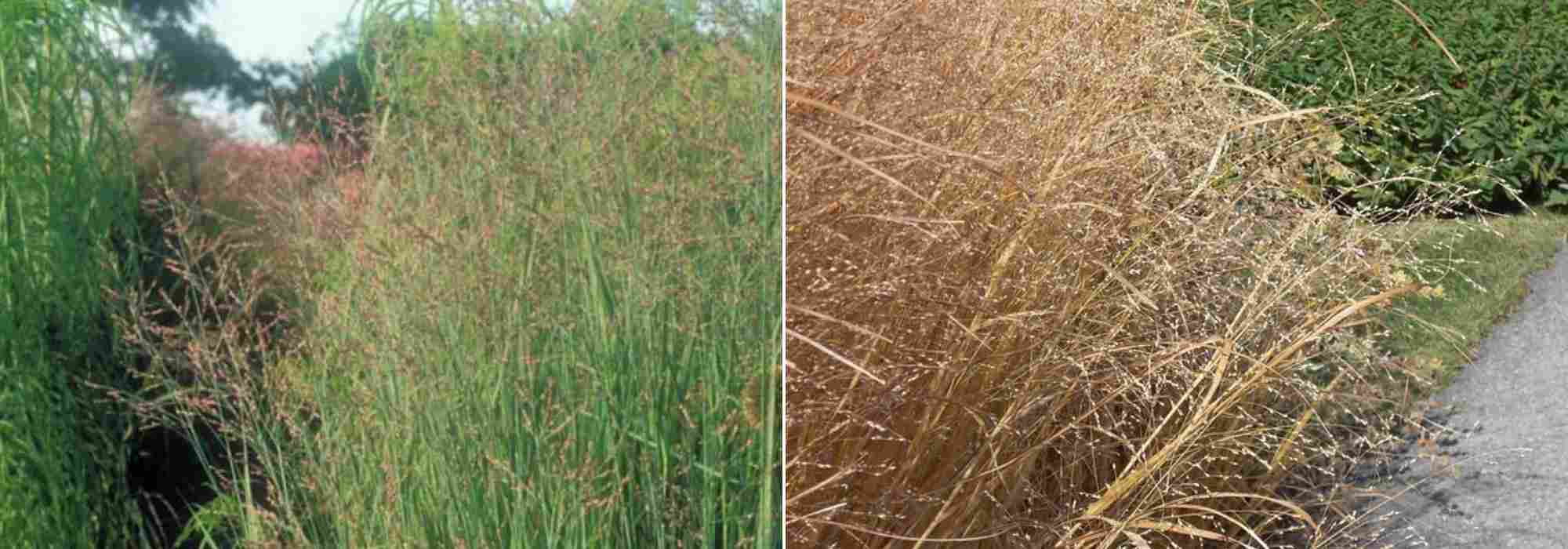
Panicum virgatum ‘Heavy Metal’, summer and autumn foliage (Photo: A. Zahrkikh)
→ Learn more about the Panicums
Stipa gigantea : giant yet airy
Stipa gigantea, impressive in height, is one of the most spectacular cultivars among stipas. If you are looking for a tall grass that makes a real impact, this is the one you need! Its airy inflorescences rise to over 2 m high and are silvery‑purple in colour in loose panicles, a very attractive sight. In perfectly drained soil, even dry in summer, they thrive and persist through winter. Foliage remains relatively low, at around 50 cm, in a compact tuft with a glossy green colour.
This beautiful grass is best planted as a specimen to showcase its architectural form and exceptional lightness. It can also be positioned in front of darker foliage, where it will be especially effective.
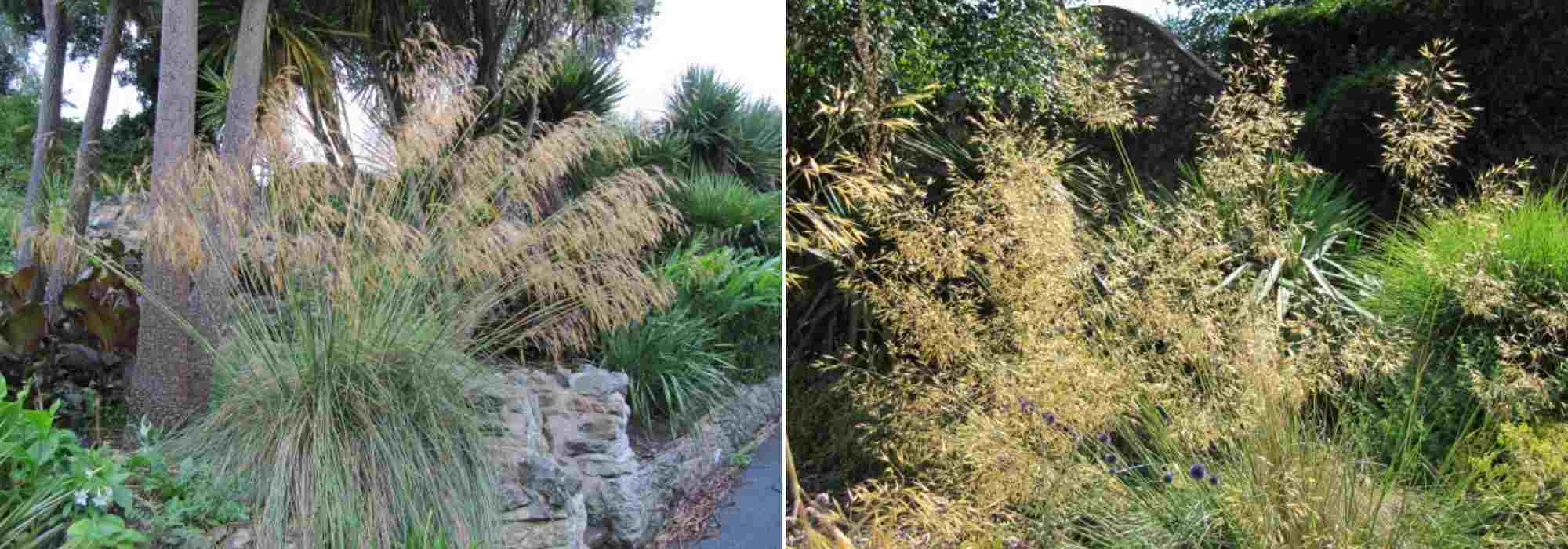
Stipa gigantea (© Leonora Enking)
→ Find Stipa gigantea in our video ‘Grasses for Summer‘
Sesleria automnalis: a bright green, late-flowering cushion
Seslerias Seslerias are not among the most popular grasses, but they are ideal in dry soils of small gardens. Available in a wide range of colours, small in size, rarely exceeding 30 cm in height with a 50 cm spread, they spread slowly. Often evergreen, they are robust and fully hardy, and have the advantage of performing well in partial shade.
Sesleria Sesleria autumnalis or autumn sesleria is a semi-evergreen variety valued for foliage that is both fine and a bright yellow-green which develops into a beautiful golden hue in autumn. Its late flowering, from late August to October, in the form of superb long silvery-white spikes, is very graceful. It brings undeniable charm in autumn, when garden starts to fade.
Plant it in sun or partial shade, in a dry rockery, alongside Allium bulbs, artemisia, carnations, or within a meadow-style border with Asters. It can also be used as groundcover, without ever becoming invasive.
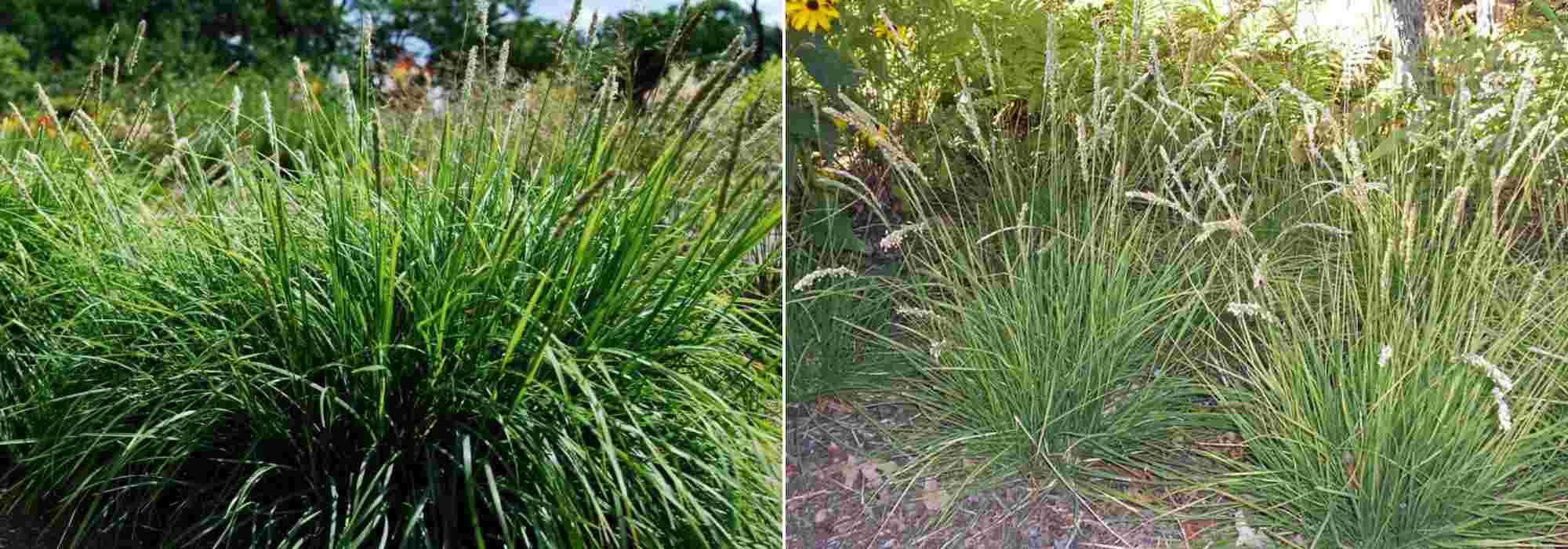
Sesleria autumnalis (Photo: A. Zharkikh)
Eragrostis spectabilis : a delightful ornamental grass
Eragrostis spectabilis, also known as love herb, is a delightful grass for dry, sandy soils. Medium-sized (60 cm tall), with very fine light-green foliage, it needs full sun to produce the magnificent mist of pink spikes throughout summer. Deciduous, it is particularly valued for those airy inflorescences that create a coloured cloud well into autumn, where they then turn purplish to bronze.
You can showcase it alongside pink and purple flowering such as Liatris, some Echinaceas, but it also stands well on its own. Eragrostis specabilis will self-seed if you do not remove its inflorescences: it is therefore perfect for areas left natural in the garden.
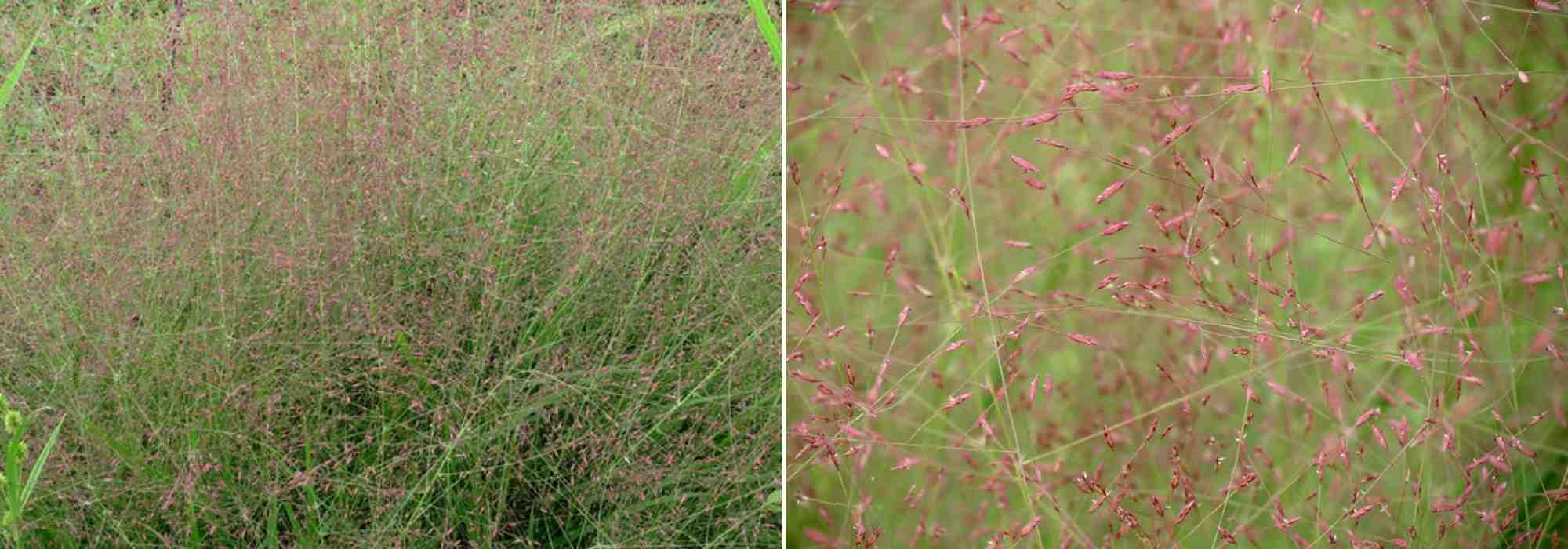
Eragrostis spectabilis, a superb mist of small flowers (Photos: K. Schultz)
Schizachyrium scoparium 'Meadow Blues': seasonally changing foliage, stunning in autumn
Much less widespread than previously mentioned grasses, this beautiful variety will catch your attention. Tall (between 0.8 and 1 m), with an erect habit producing bristly tufts, the Schizachyrium scoparium ‘Prairie Blues’ only thrives in dry, poor soils. Its very fine silvery grey-blue foliage is changeable: deciduous to semi-evergreen, it turns pinky-orange in autumn before finishing in red-purple tones, giving it a real asset for enlivening gardens before winter arrives. Its inflorescences in the form of slender spikelets are silvery all summer. It really is a wonderful plant, elegant and indispensable for withstanding drought!
Plant it in a natural meadow, or in a dry garden border, combined with a few lower contrasting bushes to create a lovely display through to autumn, with some silvery perennials (Artemisia, Nepeta) and other golden grasses.
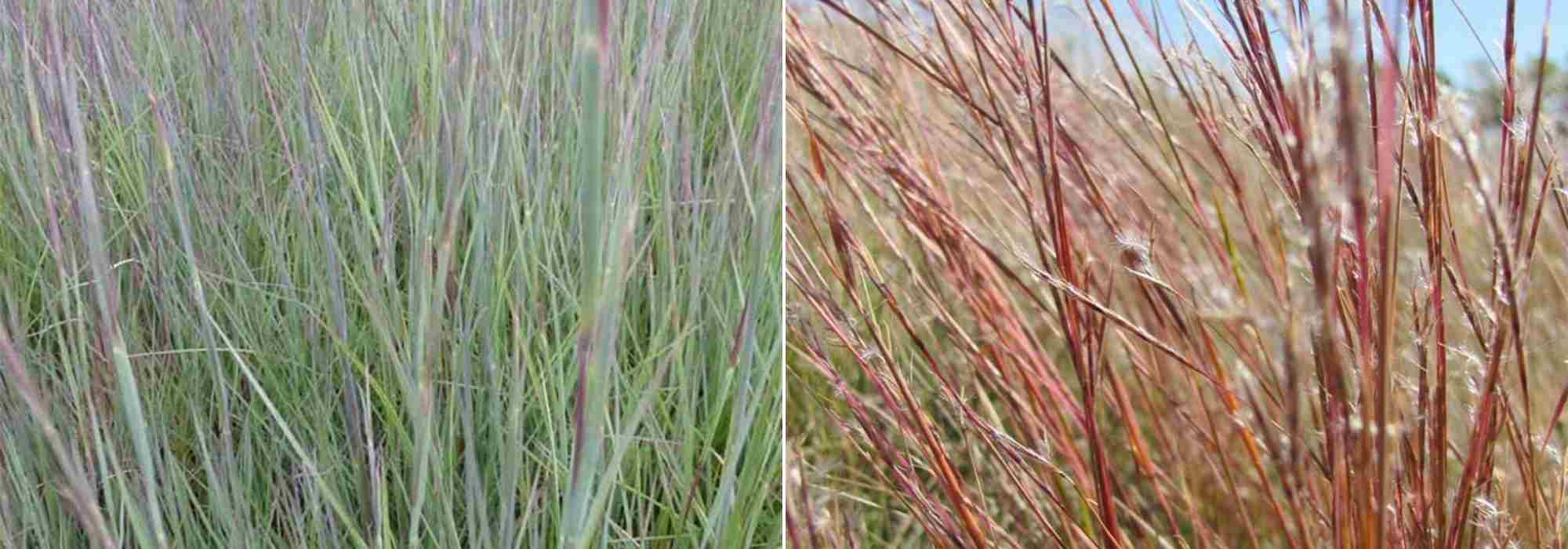
Schizachyrium scoparium ‘Prairie Blues‘, summer foliage and autumn foliage
- Subscribe!
- Contents
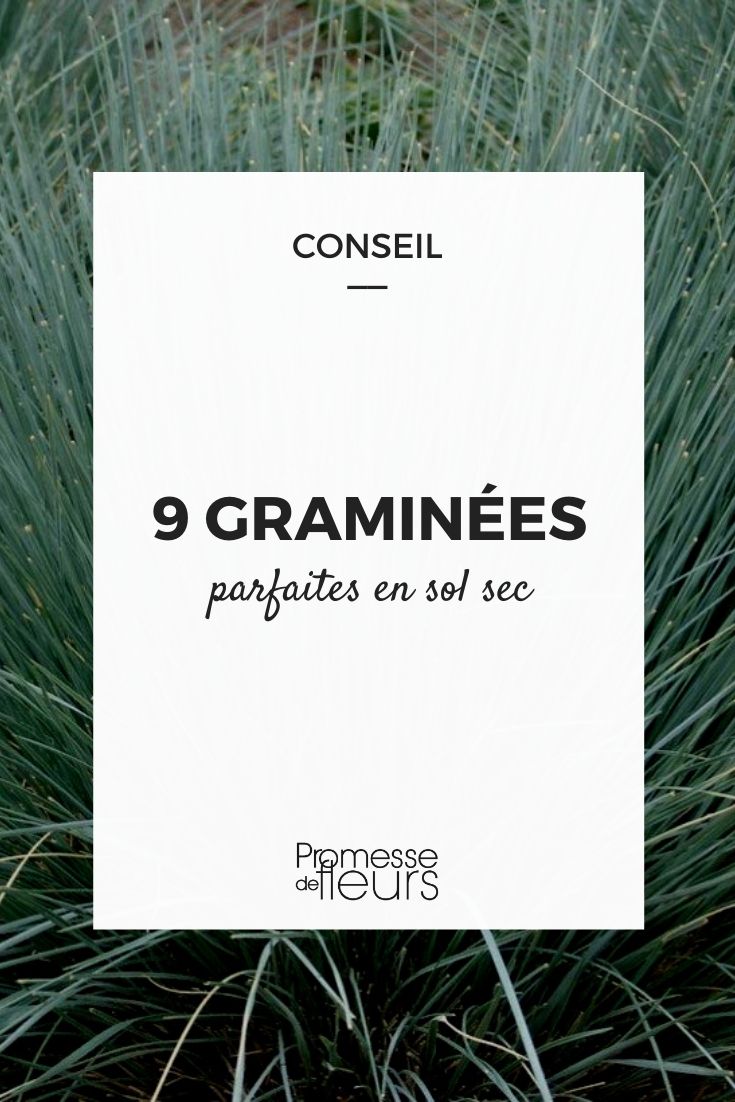































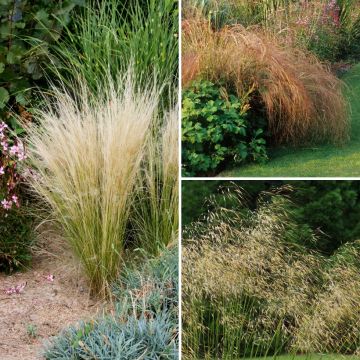
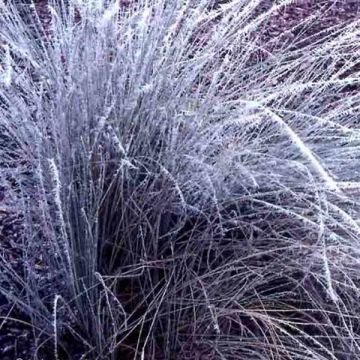
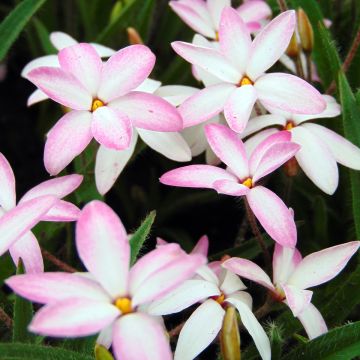
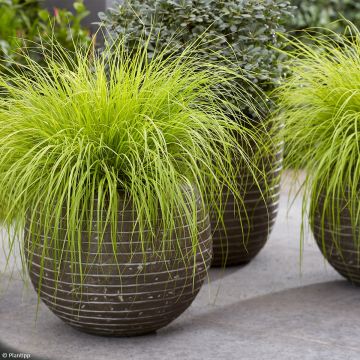
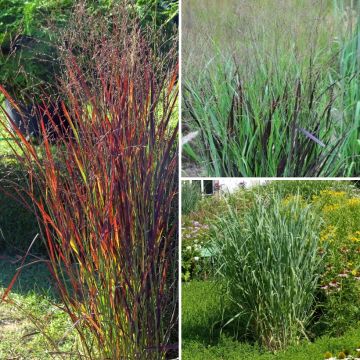
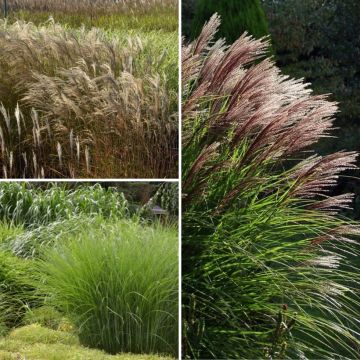
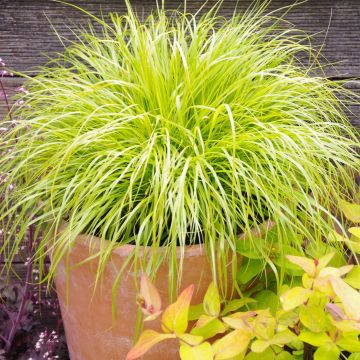
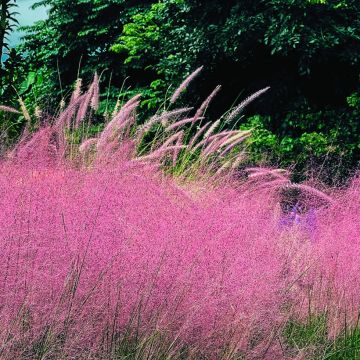
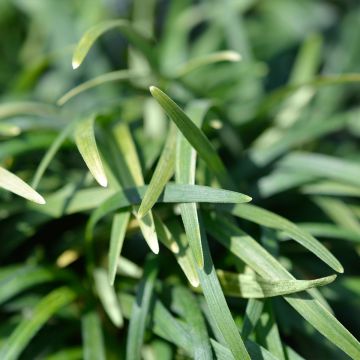
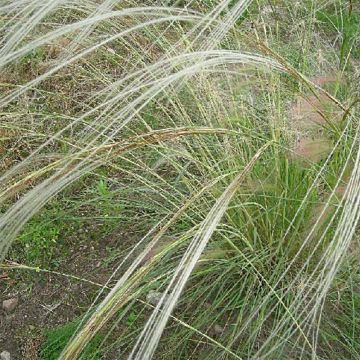
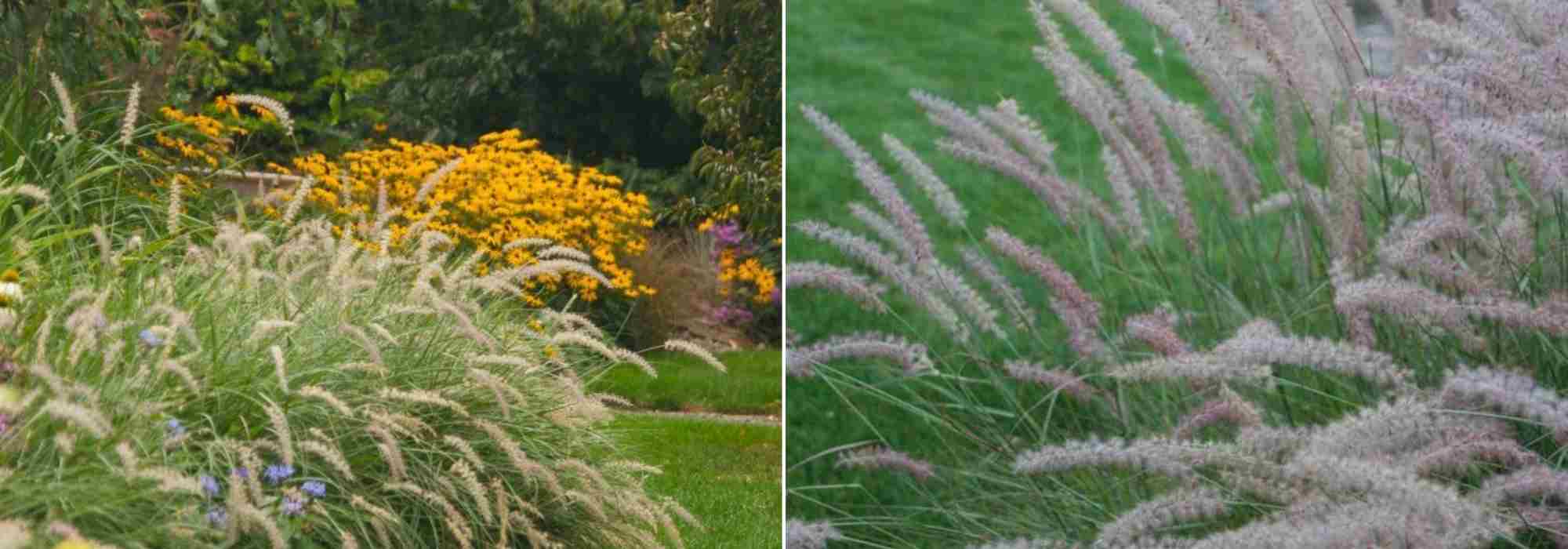
Comments